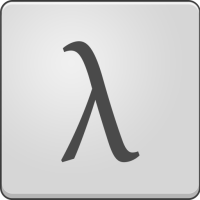tl;dr: I’m writing a new book, sign up for the announcements mailing list.
I’ve written exactly zero new technical blog posts this year because I’ve been spending all my writing efforts on my next book, Practical Math for Programmers (PMFP, subtitle: A Tour of Mathematics in Production Software).
I’ve written a little bit about it in my newsletter, Halfspace. There I rant, critique, brainstorm, and wax poetic about math and software. This blog will remain dedicated to technical details. If you like my casual writing—the complementary half of this space, hence the name—go sign up for that.
The concept for Practical Math grew from an ongoing frustration with academic mathematicians and computer scientists overselling the work in their research papers as “widely applicable.” I ranted about this at length in the newsletter, but it has bothered me and wasted my time throughout my education and career.
So this book will assemble a large list of applications of interesting math used in bona-fide production systems. I hope the title makes this goal abundantly obvious. It will serve the following purposes, beyond satiating my spite.
- It will be a gateway drug to mathematics for people who are not interested in math (yet).
- It will inspire the reader to draw analogies to problems they face in their own work.
- It will be a clear and unambiguous answer to the question “when will we ever use this?”, hopefully satisfying skeptical students.
- It will be much easier than pimbook to sample and read casually. It could be a bathroom reader for the stalls of software firms.
To achieve these, the book will follow three principles. It won’t be super heavy on mathematical details. No proofs, nice diagrams, and limited notation. It will also contain working demonstrations of each production application. Python 3, with a GitHub repo, full test suite, and code documentation to back it. And finally, each application section (I’m tentatively calling them “Tips”) will be only 3-5 pages long. I plan to write 60-75 Tips. Add essays, and this is a 200-300 page book. I’ve currently written drafts of 16 with two more in progress.
Though there will be technical details, the Tips will read be more like a survey than a textbook. And to make it more appealing and interesting, I’ll focus on the story behind the problem that the math is solving, the evidence that it is used in production, and the references you can read if you want details. In particular, I will interview the practitioners who actually use or manage the software built around the math, or cover the history from primary sources when I can. To achieve working demonstrations for 60+ applications (~3 years of blogging for me), I will limit myself to demonstrations that can fit in under 1 page of Python code, I will simplify the scope of the demonstrations (within reason), and port/adapt reference implementations in open source software when they are available.
And as I would hope, readers who are enticed by mathematics from reading Practical Math might be convinced to journey through A Programmer’s Introduction to Mathematics.
As for the content, the Tips are still largely unstructured, though themes are showing up around the following topics that will probably evolve into Chapter divisions.
- Measuring things. Either because the concept is fuzzy or approximations are required. Problems around attribution, problems in counting, detection, and budgeting.
- Dealing with uncertainty. Either uncertainty in measurements or defining useful probabilistic models for decision making.
- Safety. In terms of data corruption, privacy, redundancy, etc.
- Efficiency. Techniques for improving efficiency of things in place (without system redesigns). Or situations in which an weird bottleneck shows up that math helps smooth over.
And then there are topics that don’t fit anywhere, like Perlin noise generation or market design techniques. Maybe I’ll call that chapter Potpourri. If you have suggestions for applications you think would fit well in the book, please reach out! Especially if you have experience using the ideas in prod.
In between chapters I plan to write essays, such as one on the ethics of applying math to automated computer systems, and one reflecting on the sorts of problems that engineers face that could be avoided with just a modest amount of math, one on the value of analogy in engineering and math, and an updated and more professional version of “What’s in Production.”
I hope to have a first draft done this year (though I’m not on track), and publish some time in 2023.






![Erratum for “An inverse theorem for the Gowers U^s+1[N]-norm”](https://azmath.info/wp-content/uploads/2024/07/2211-erratum-for-an-inverse-theorem-for-the-gowers-us1n-norm-150x150.jpg)

